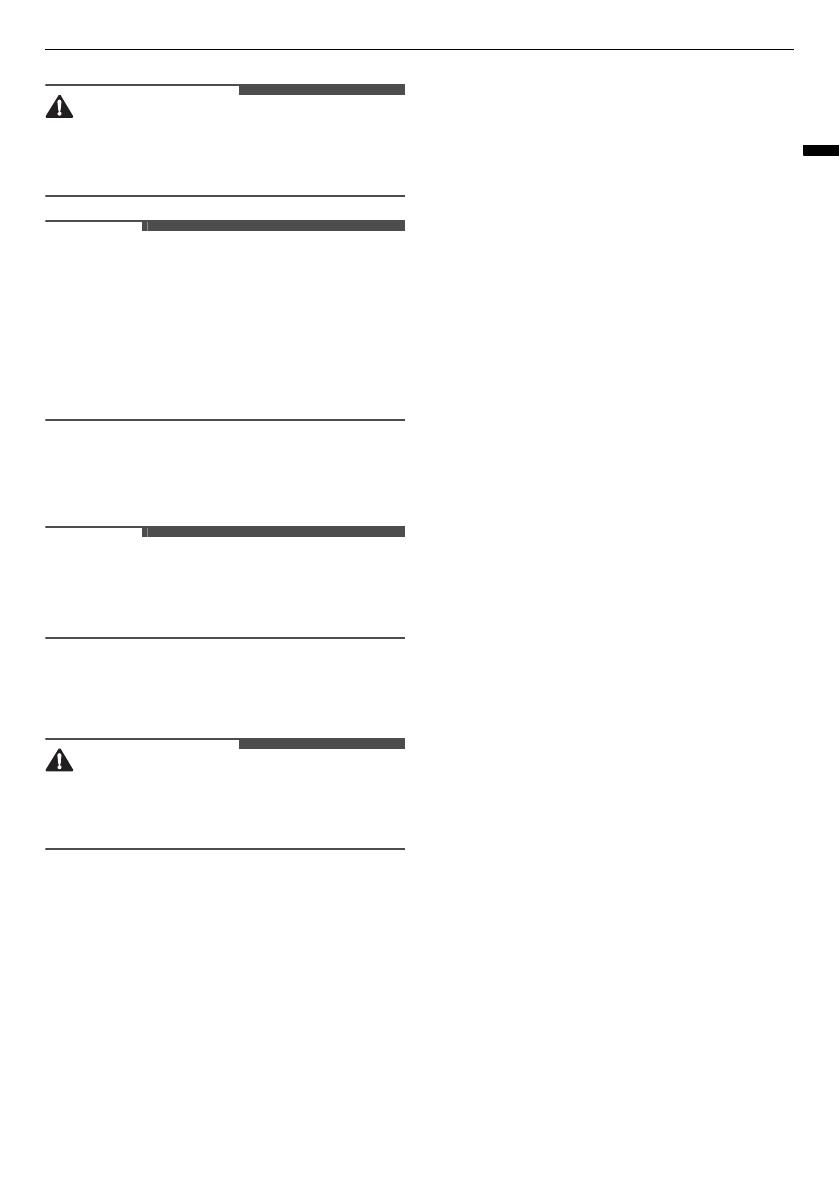
15
OPERATION
ENGLISH
• For safety reasons, do not allow children or
animals to enter the appliance. It may cause
damage or injury.
• The final part of a tumble dry cycle occurs
without heat (cool down cycle) to ensure that the
clothes are left at a temperature that ensures
the clothes will not be damaged.
• A high atmospheric temperature and a small
room may both increase drying time as well as
energy consumption.
Preparing the Clothes
• For the best drying performance and most
efficient energy usage, do not overload the
appliance.
Checking the Clothes before
Loading
• Check that the clothes are not stuck between
appliance and door, or the clothes may get
damaged while drying.
• Observe the maximum load capacity on the
programme table for the relevant drying
programme to get optimum drying results.
Overloading gives a poor drying result and
causes unnecessary creasing.
• Do not load soaking wet clothes into the
appliance. Doing so will increase the drying time
and energy consumption. Make sure that the
clothes are spun thoroughly in the washer
before loading them in the dryer.
• A mixed fabric load can cause the drying time to
be extended and the time remaining in the
display to pause during active drying until the
actual time remaining matches the time
displayed.
• Make sure to empty all pockets. Items such as
nails, hair clips, matches, pens, coins and keys
can damage both your appliance and clothes.
• Remove loose belts and close zippers, hooks and
strings to make sure that these items do not
snag other clothes.
Sorting the Clothes
Clothes have their own fabric care labels, so drying
according to the fabric care label is recommended.
Sort the clothes into size and type of fabric and
then prepare the clothes according to the symbols
on the fabric care labels.
Woollens
• Dry woollens on the
Wool Refresh
programme.
Be sure to follow fabric care label symbols first.
Wool may not be completely dried from the
cycle, so do not repeat drying. Pull woollens to
their original shape and dry them flat.
Woven and Loopknit Materials
• Some woven and loopknit materials may shrink,
depending on quality.
No-Iron and Synthetics
• Do not overload the appliance. Take out no-iron
items as soon as the appliance stops to reduce
creases.
Baby Clothes and Nightgowns
• Always check fabric care labels.
Rubber and Plastics
• Do not dry any items made from or containing
rubber or plastics such as:
- Aprons, Bibs and Chair Covers
- Curtains and Tablecloths
- Bath Mats
Fiberglass
• Do not dry fiberglass items in the appliance.
Glass particles left in the appliance may be
subsequently picked up by your clothes in later
cycles.



















